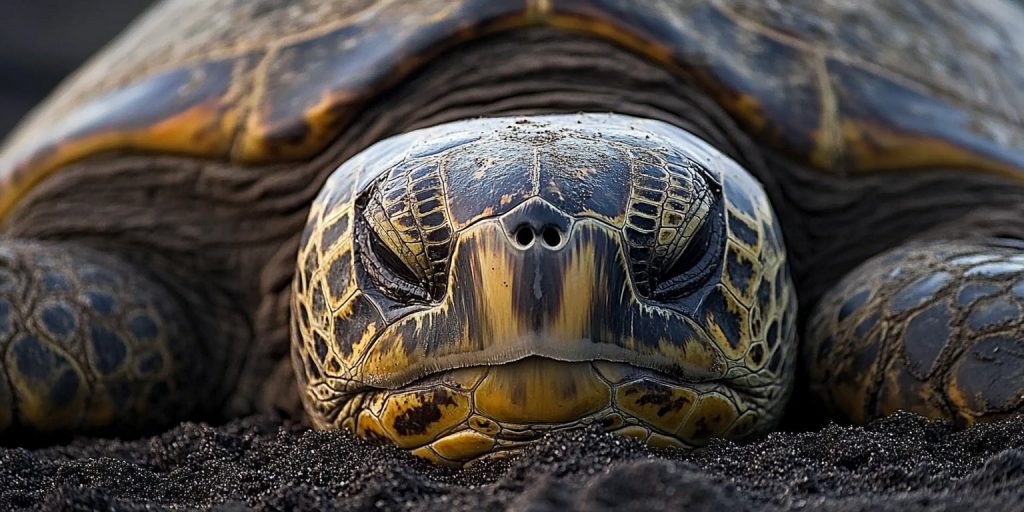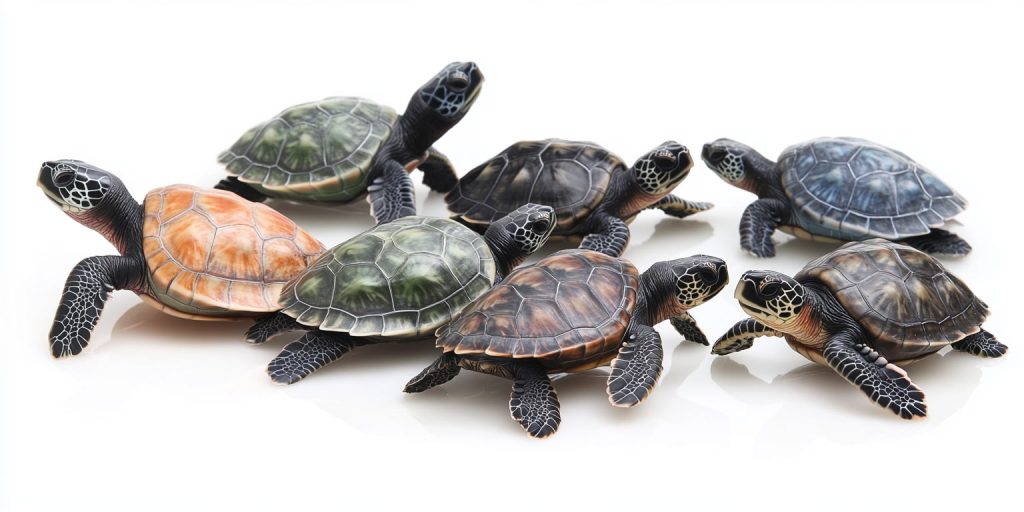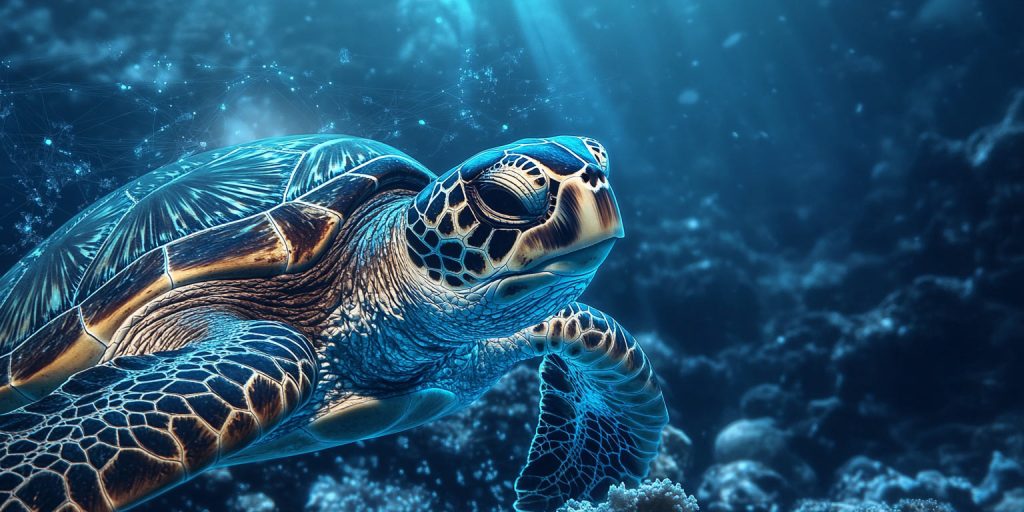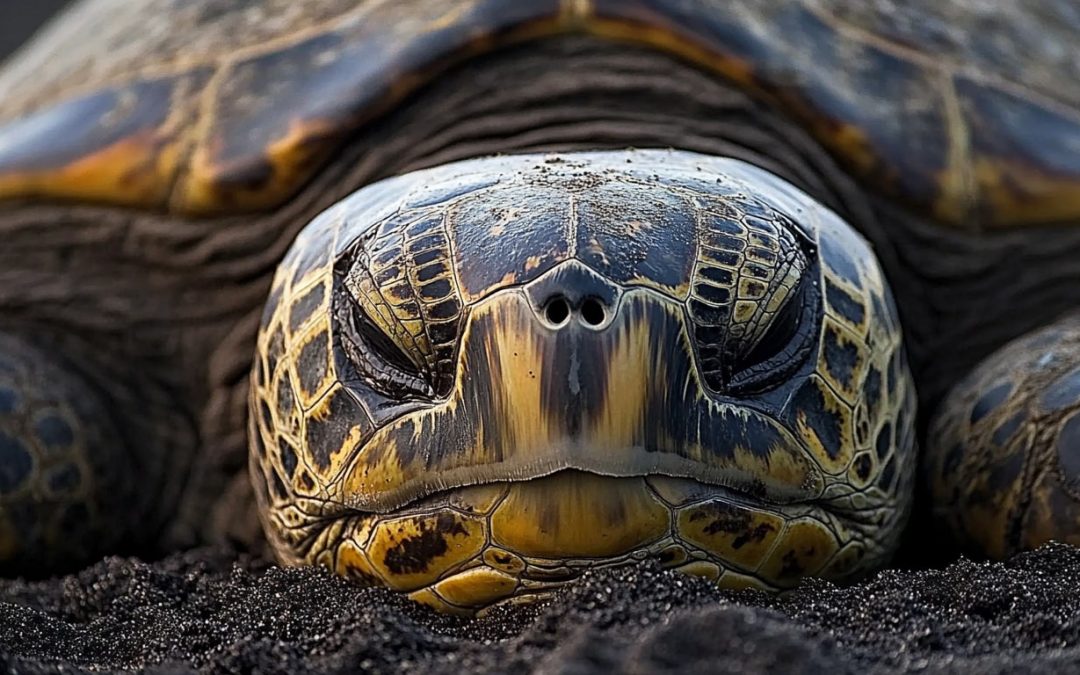A Day in the Life of a Oahu Green Sea Turtle

Green sea turtles aren’t in a rush. Their days are slow and peaceful. Most of the time, they’re swimming close to shore or resting in shallow areas. They’ll swim around, look for food, or simply relax under ledges or coral reefs. Their movements are gentle, and they conserve energy by not swimming too far unless they have to.
Early Morning: The Wake-Up Glide
As the sun starts to rise, the water warms slightly, and the turtle begins to stir. They may have spent the night tucked under a coral ledge or resting on the ocean floor. Unlike humans, turtles don’t have eyelids they can close, so their sleep is more like a low-energy state.
- Light triggers their activity; once it’s bright enough, they start to move.
- They surface for air first thing, since they can only hold their breath for a few hours while resting.
- After a quick breath, they glide slowly through the water, heading to a feeding area they know well.
Mid-Morning: The Feeding Session Begins
By mid-morning, the turtle reaches a reef or shallow bed with lots of algae and. This is breakfast, lunch, and dinner all rolled into one long grazing session.
- Green sea turtles are herbivores, feeding mainly on limu (seaweed) and seagrass.
- They bite and tug gently at plant matter growing on rocks or coral.
- Their beaks are serrated to help tear algae from hard surfaces.
- They may graze for hours, chewing slowly and calmly while staying mostly still.
Late Morning to Early Afternoon: Time to Chill
After eating, the turtle often rests. This isn’t just laziness and it helps conserve energy. These animals are built for endurance, not speed, and their body systems are adapted to work on minimal fuel.
- They may float near the surface in warm, shallow water to soak up heat.
- Some dive back down to a ledge or crevice to take a nap.
- A turtle can rest underwater for 2 to 4 hours at a time when calm.
Afternoon: Exploring, Grazing Again, or Another Nap
Depending on how full or active they feel, the turtle might swim around its territory or move to a new grazing spot.
- They don’t cover large distances every day unless migrating.
- Afternoon grazing is slower; they’re not in a rush.
- They might stop to rest again in cooler waters or shady reef zones.
How Long Do They Spend Eating?
Eating takes time when your food is mostly sea plants. Hawaiian green sea turtles are herbivores, so their diet includes seaweed and algae. They graze slowly, often spending hours munching. It’s not like a quick snack. They chew through their meals bit by bit, especially during the warmest parts of the day when they’re near shallow reefs.
Do Sea Turtles Nap?
Yes, they do take naps. In fact, resting is a big part of their day. Green sea turtles will often find a calm, hidden spot on the ocean floor or under rocks to relax. They can sleep underwater for several hours at a time, especially when they’re not stressed or in danger. These naps help them stay energized throughout the day.
Evening: Slowing Down
As the sun lowers and the water cools, the turtle prepares to wind down.
- Some turtles head back to their sleeping spots before dark.
- Others take a final trip to the surface for air and stay near there in case of nighttime surfacing.
- They might nap for longer periods now, entering deep rest in a safe spot.

Can They See in the Dark?
Turtles can see better than you might think in low light. Their eyes are adapted to underwater life, so even when it’s dark or murky, they can still make out shapes and movement. They aren’t night owls, but if they need to move around at night, they can manage just fine.
Nighttime: Low Energy, Minimal Movement
At night, sea turtles become quiet. They do not have great night vision, but they see well enough to navigate slowly.
- Most will stay hidden or nestled under ledges.
- They may rise once or twice to breathe, then go back to sleep.
- Unlike humans, they don’t sleep for eight straight hours. It’s more like intermittent rest throughout the 24-hour cycle.
Do Turtles Have a Social Life?
Turtles are mostly loners, but that doesn’t mean they don’t interact. While they don’t have “friends” like people do, they often cross paths with other turtles. During mating season, they get a little more social, looking for mates and sometimes competing with others. Outside of that, they don’t hang out in groups or form long-term bonds. Still, their paths often overlap, especially in good feeding areas.

Summary of a Sea Turtle’s Day
Here’s the basic breakdown of their daily routine:
Morning
- Surface for air
- Swim to feeding area
- Graze on algae and seagrass
Midday
- Rest in warm shallow waters
- Float near surface or hide under coral
- Optional nap
Afternoon
- Resume grazing
- Occasional travel within local area
- More rest or minimal movement
Evening
- Head to safe resting place
- Final surfacing for air
Night
- Sleep underwater
- Occasional movement to breathe

A Calm Life Beneath the Waves
Hawaiian green sea turtles live a peaceful, steady life. They stick to simple routines: eat, rest, swim, repeat. Though they live mostly on their own, they seem perfectly content with the quiet rhythm of the ocean. Watching them is like seeing time slow down. Their way of life reminds us that calm can be powerful, and simplicity doesn’t mean boring. It means balanced.

